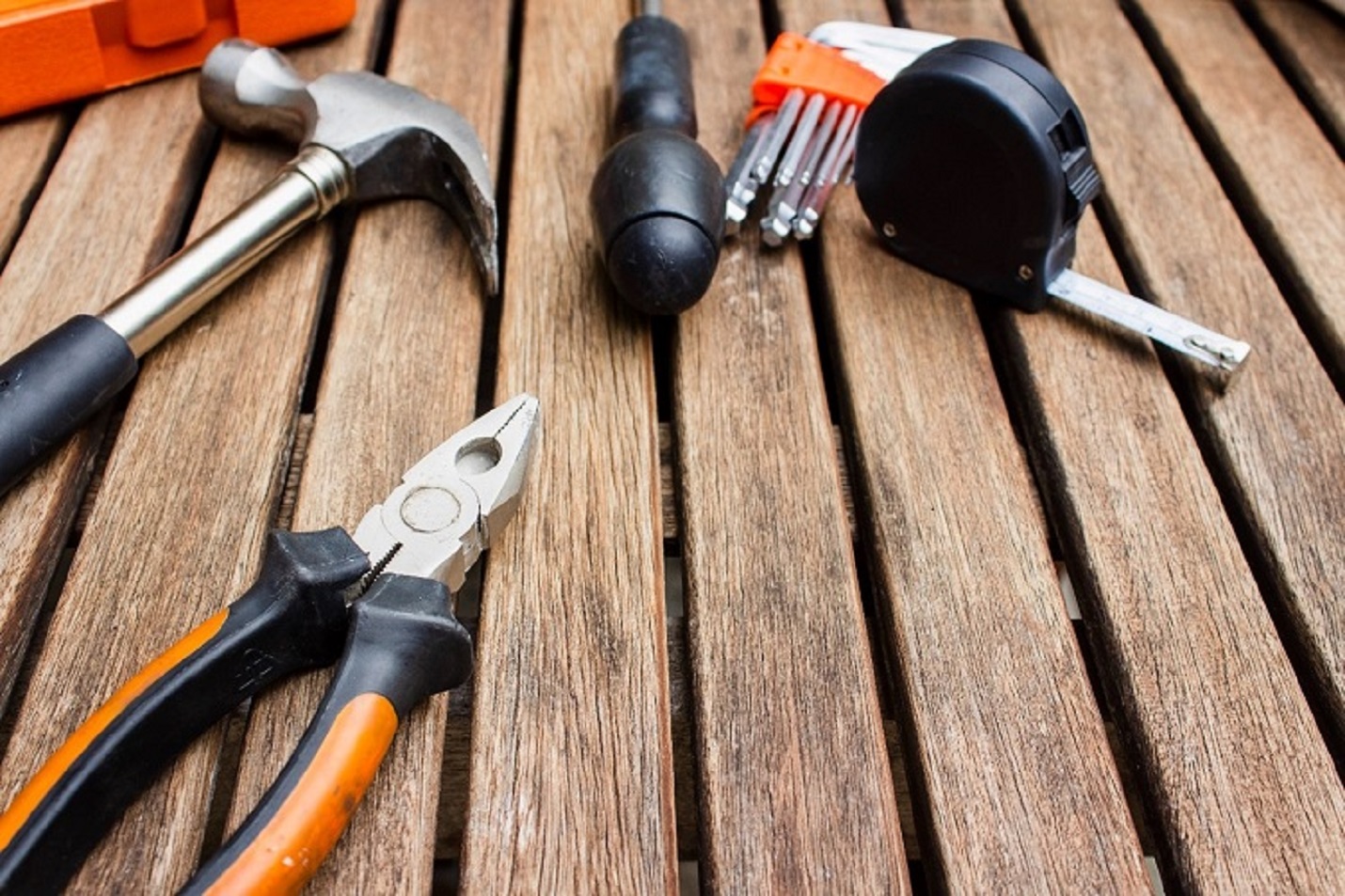10 Essential Tools for Every Homeowner’s Toolbox

A new home needs a plethora of things to make it functional and well managed, and a home toolbox is one of them. Starting with a few basic tools is a good idea for beginners to tackle the common household repairs themselves.
Here are 10 essential multipurpose tools that would help you deal with regular repairs, both big and small.
- Hammer: A home toolbox is incomplete without a hammer. Most of the hammers have a claw opposite to their head. The head of the hammer you to drive in nails and the claw helps to pry them out easily. Hammers are also used in tasks where a good whacking is required such as breaking a plaster wall, framing, or shaping metal and more. According to carpentry experts, a 16-ounce hammer with a smooth head and a curved claw is an ideal choice for a home toolbox. This size is versatile enough for a range of basic household DIYs. Make sure you select a hammer that has a cushioned handle to protect you from impact, vibration, and squeezing pressure.
- Screwdriver: One of the most used tools in every household, a screwdriver comes in handy for tightening screws, assembling furniture pieces, opening cans, and removing switch covers. We recommend a sturdy multi-bit screwdriver that comes with an assortment of screwdriver bits in different types and sizes.
- Cordless Drill: Be it boring holes into a wall to hang your favorite painting, driving bolts into the wall to mount your flat screen or tightening hinges, a cordless drill is a versatile tool for DIY projects. You might also consider buying specific drill bits for cutting large holes and sanding. Cordless drills can be used anywhere without worrying about a power outlet or the length of the cord. They come with rechargeable batteries that fit at the bottom of the handle, making them easier to balance and use.
- Adjustable Wrench: Wrenches are used to tighten and loosen the nuts and bolts of various sizes – especially when assembling furniture. You can include different types of wrenches in your toolbox such as Allen wrench, combination wrench, open-end wrench, adjustable wrench, and socket wrench. However, if you do not want to buy all of them at once, you can begin with an eight-inch adjustable wrench and an Allen wrench. These two wrenches are enough to tackle most home repair tasks for a beginner.
- Utility Knife: Also known as Stanley Knife, a utility knife is a simple tool that is an indispensable part of every home toolbox. It has a sharp, pointy blade and a handle. It could be used for dozens of regular tasks from cutting boxes, envelopes, and twines, to trimming wallpaper, slicing fiberglass insulation, cutting drywall and more. Being encased inside a handle prevents accidental cuts.
- Pliers: A pair of pliers comes in handy when you want to firmly grasp onto something to pull, twist, bend or cut it. Different types of pliers are available for various purposes, but as a beginner, the essentials are needle nose pliers, slip-joint pliers, and cutting pliers. You can expand your collection as the requirements of your home repair projects change.
- Tape Measure: You need to measure correctly to complete most DIY projects or home repairs with finesse, be it hanging your pictures, measuring your space for new furniture, or cutting out vinyl for flooring. For most home repair jobs, a 25ft. general contractor measuring tape is enough. Consider buying a measuring tape that shows both inches and centimeters.
- Flashlight: Although you have a built-in flashlight in your phone, the need for a heavy-duty flashlight cannot be ignored in a toolbox. It illuminates the space and helps you make required repairs in dimly lit areas such as basements, under the cabinets and sinks, and in crawl space under the house. It will also come in handy for in case of power failure requiring you to review electrical wires. Look for a rechargeable flashlight if you regularly need it for various purposes. Just swap the discharged batteries with the charged ones and you are good to go.
- Tape: It is not a tool, but it is one of the most essential elements of a toolbox. From patching to repairing, duct tape will come to your rescue on numerous occasions. There are multiple types of tapes available such as duct tape, electrical tape, plumber tape, and painter’s tape depending on your sticking requirements. Consider including all of them in your toolbox, as each one of them sticks to a special type of texture and has a different adhesive capacity.
- Safety Gear: It is important to wear safety gear when you are handling household repairs or other DIY projects. You will come in contact with potentially harmful chemicals, germs, and grease while fixing areas like leaky faucets or pipes, cleaning the chimney, or washing your windows. A pair of sturdy latex gloves will protect your hands from harmful substances and give you a better grip on fittings.
You cannot afford to ignore the safety of your eyes. A pair of safety goggles that fits well and is well ventilated to prevent fogging is a must while doing home improvement and repair jobs to protect your eyes from contaminated water, harmful chemicals, sparks, and dust particles. Also, always wear a mask to prevent inhaling harmful fumes and minute particles.
Final word
As a beginner, you will be able to handle most of your home repair issues with these tools. Keep them organized in a toolbox to quickly find the right tool when needed. Try to learn about the multiple uses of a tool through an online tutorial or from an expert friend to build on your DIY skills. Once you are hands- on and familiar with the basic tools, you can always upgrade your toolbox with the advanced ones.

